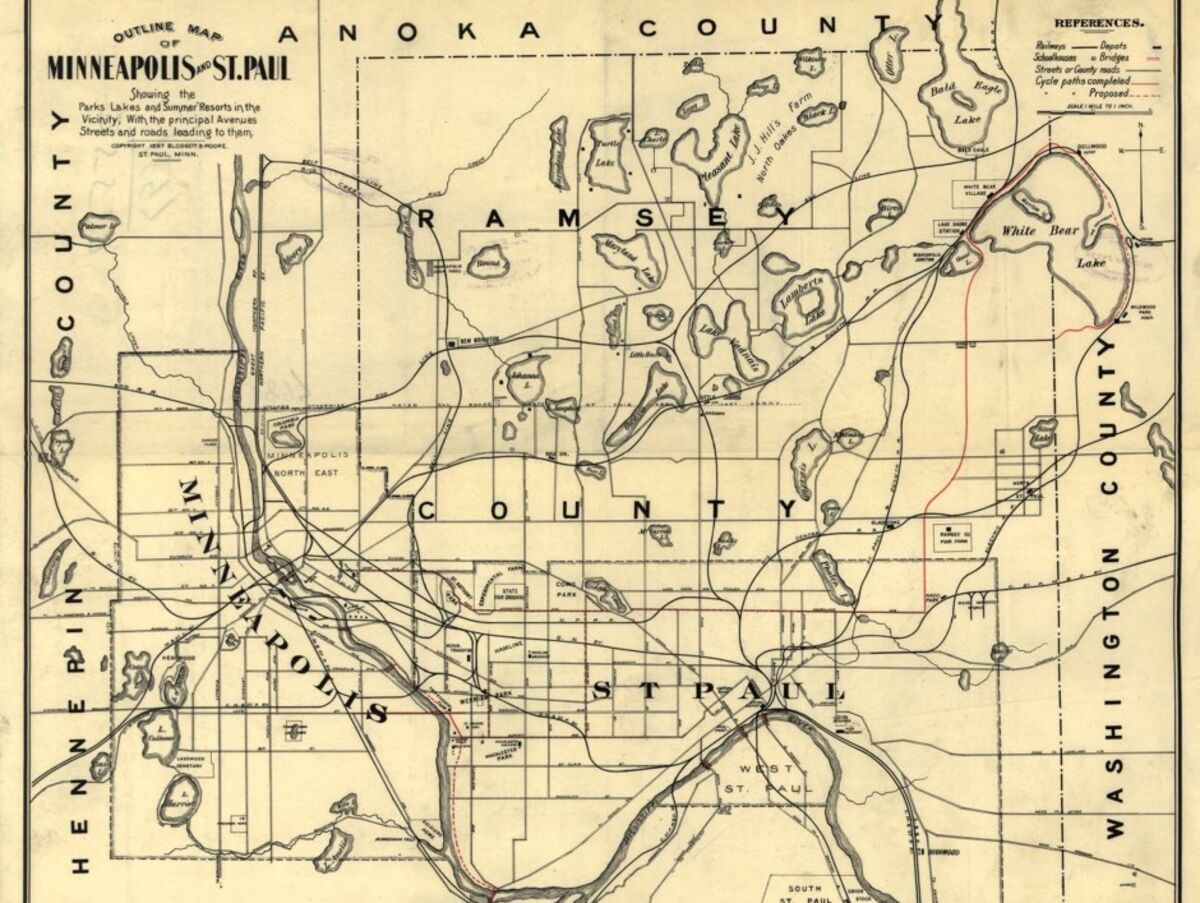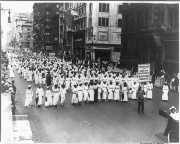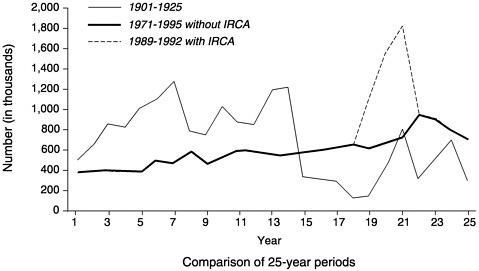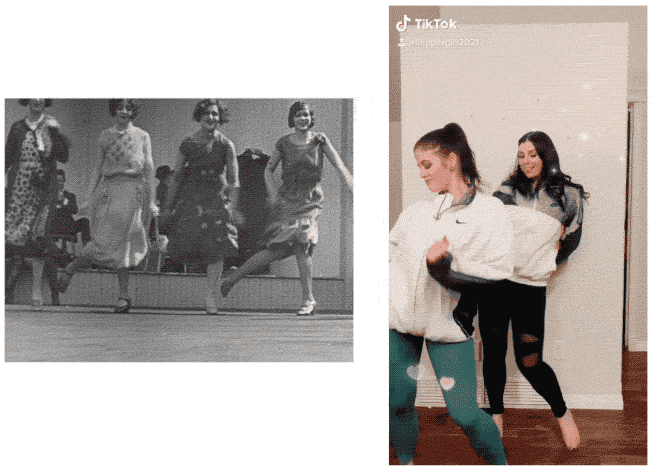43 what was the primary effect of increased racial tensions during the 1920s quizlet
what was the primary effect of increased racial tensions ... Answer:Movement of white families to urban centersExplanation: What was the primary effect of increased racial tensions during 1920s? The Roaring Twenties Flashcards - Quizlet the emergence of racial tensions and a decrease in agricultural prices B. the emergence of the automobile and an increase in oil production C. the emergence of immigration quotas and a decrease in spending power D. the emergence of credit and an increase in manufacturing output
World War I and the African-American experience - BrandeisNOW These efforts continued throughout the 1920s and 1930s. The "Double V" campaign — victory at home and victory abroad — adopted by African-American leaders during World War II was informed by the lessons of World War I and an insistence that the United States must first and foremost ensure freedom for African-Americans.

What was the primary effect of increased racial tensions during the 1920s quizlet
Racism in the United States - Wikipedia As the civil rights movement and the dismantling of Jim Crow laws in the 1950s and 1960s deepened existing racial tensions in much of the Southern U.S., a Republican Party electoral strategy - the Southern strategy - was enacted to increase political support among white voters in the South by appealing to racism against African Americans. What was the primary effect of increased racial tensions ... What was the primary effect of increased racial tensions during the 1920s quizlet. What was the primary effect of increased racial tensions during the 1920s quizlet. Categories Uncategorized. Leave a Reply Cancel reply. Your email address will not be published. Required fields are marked * Welcome to Butler County Recorders Office Copy and paste this code into your website. Your Link …
What was the primary effect of increased racial tensions during the 1920s quizlet. 1920s Terms Flashcards - Quizlet The cost of food, clothing, shelter, and other essentials. It was increased as a result of rapid inflation from people racing to buy goods that had been rationed and businesses raising prices they had been forced to keep lowered. Seattle General Strike In Seattle 35,000 shipyard workers walked off the job, demanding higher wages and shorter hours. The KKK and racial problems - History Learning Site Many different groups had emigrated to America over the years. One group - the Blacks - had been brought there against their will and after the success of the northern states during the Civil War and the freeing of the Blacks from slavery in 1865, a sinister group was established which was designed to spread fear throughout the Black population that still lived in the southern states. Where Are They Now? Archives - Hollywood.com Click to get the latest Where Are They Now? content. 1920s Unit - Mrs. Cleveland's Website Quizlet #1 on 1920s Quizlet #2 on 1920s Quizlet #3 on 1920s Test # 7 The 1920s Describe how the battle between traditionalism and modernism manifested itself in the major historical trends and events after World War I and throughout the 1920s. US.31 Describe the growth and effects of radio and movies and their role in the worldwide diffusion of ...
What was the PRIMARY effect of increased racial tensions ... The less affluent could not afford to pay for deferments. The inequities in draft eligibility between African Americans, monied whites, and working-class whites, of whom many were Irish, increased racial tensions. Several cities suffered draft riots in which enrollment officers and free African Americans were targeted for violence. What actions did the US government take to suppress anti ... What major changes occurred in American society as a consequence of wartime mobilization quizlet? Rationing, better pay and jobs, and racial tension. What is a long term effect of mobilization for the war? US emerged as the strongest power in the world, greater acceptance of women in the workplace, and a new way of waging war based on the ... Which of the following indicates a rise in racial tensions ... Social Studies. Which of the following indicates a rise in racial tensions in the 1920s? A. increased enlistment of African American men into the military. B. movement of many African Americans to the South. C. passage of several federal laws to end Jim Crow practices. D. membership growth of the Ku Klux Klan and N.A.A.C.P. Is it D? Am I correct? What Came After World War I for African-American ... - Time In the months following the armistice, racial tensions across the country increased. Black soldiers returned to their homes eager to resume their lives, but also possessing a deeper appreciation ...
BibMe: Free Bibliography & Citation Maker - MLA, APA ... BibMe Free Bibliography & Citation Maker - MLA, APA, Chicago, Harvard University of South Carolina on Instagram: “Do you know a ... 2,460 Likes, 121 Comments - University of South Carolina (@uofsc) on Instagram: “Do you know a future Gamecock thinking about #GoingGarnet? 🎉 ••• Tag them to make sure they apply…” fdiroma2municipio.it A good quizlet for this unit will have visuals due to the large amount of brain anatomy. myhealthcoach. american government roots reform flashcards on quizlet of american government roots reform flashcards, american government chapter 7 section 3 ap world history the exam and its essays units of study > > > useful links > > quizlet ... Race Relations in the 1930s and 1940s - The Library of ... Previous Section Labor Unions During the Great Depression and New Deal; Next Section World War II; Race Relations in the 1930s and 1940s Negro and White Man Sitting on Curb, Oklahoma, 1939. Farm Security Administration/Office of War Information Black-and-White Negatives. The problems of the Great Depression affected virtually every group of ...
World War II and Post War (1940-1949) - The Civil Rights ... The fight against fascism during World War II brought into focus the contradictions between America's ideals of democracy and its treatment of racial minorities. With the onset of the Cold War, segregation and inequality within the U.S. were brought into focus on the world stage, prompting federal and judicial action.
Black & White, America in the 1920s, Primary Sources for ... Racial pride advanced as a new "modern" generation of black leaders achieved self-directed gains in social and political realms. Racial hatred escalated to new extremes of virulence and destruction as whites resisted the inevitable adjustments to black advancement.
1920s Flashcards | Quizlet Migration of African Americans to nothern cities increased racial tensions, which led to violence in many cities. Conditions were no better in the South than in the North.
US History Finals Practice Questions Flashcards | Quizlet (A) The rise of the military-industrial complex during the 1950s and the 1960s (B) An increase in the standard of living in the decades following the Second World War (C) Laws limiting the power of labor unions in the 1920s (D) The creation of social welfare and regulatory agencies under the New Deal and Great Society
MIDTERM Flashcards | Quizlet Youth turnout surged during 2018, compared to the 2014 election, and it far outpaced the overall increase in voter turnout within the total population. Incorrect Answer(s) Although youth turnout did experience an increase from the 2014 election to the 2018 election, the level of turnout was not significantly higher than the increase seen in the ...
What was the primary effect of increased racial tensions ... What was the primary effect of increased racial tensions during the 1920s Answers Answer from: estefanlionel8678 SHOW ANSWER Postwar economic turmoil contributed to widespread racial unrest. Returning soldiers found it hard to find work and affordable housing, many blamed African Americans for taking their jobs.
Immigration to the United States, 1851-1900 | Rise of ... During the 1870s and 1880s, the vast majority of these people were from Germany, Ireland, and England - the principal sources of immigration before the Civil War. Even so, a relatively large group of Chinese immigrated to the United States between the start of the California gold rush in 1849 and 1882, when federal law stopped their immigration.
Race riots, lynchings, and other forms of racism in the 1920s Racial tensions heightened with labor troubles in the city. Unions had no black members, and employers hired blacks in part because they knew that they would not go out on strike. Rumors swept white neighborhoods that blacks were arming themselves.
What was the primary effect of increased racial tensions ... How many presidents have lost the popular vote i the last 50 years. Why were union leaders upset with president truman after the end of the railroad strike of 1946?. What was the primary effect of increased racial tensions during the 1920s quizlet. How did colonized people tend to view their colonizer? Did colonizers share this ...
Progressive Era: 1890-1920s: Effects of 1906 Earthquake ... Effects of 1906 Earthquake. In the early morning hours of April 18, 1906, the earth shuddered beneath San Francisco. The 7.7 to 7.9 magnitude earthquake remains one of the worst urban disasters in U.S. history. Around 4,000 people died as a direct result of the earthquake and resulting fire that burned the city for the following three days.
What caused the depression of 1920? - Colors-NewYork.com "The primary cause of the Great Depression was the war of 1914-1918," the former president wrote in his 1952 memoirs. "Without the war there would have been no depression of such dimensions." ... Why did nativism strengthen during the 1920s, and how did the government deal with the tensions? The rise of nativism in the 1920s was caused ...
The Segregation Era (1900-1939) - The Civil Rights Act of ... As segregation tightened and racial oppression escalated across the U.S., black leaders joined white reformers to form the National Association for the Advancement of Colored People (NAACP). Early in its fight for equality, the NAACP used federal courts to challenge segregation. Job opportunities were the primary focus of the National Urban League.
Roaring 20's Pre test Flashcards - Quizlet Racial tensions increased and eventually erupted into violence and rioting. The data in the chart support the idea that the immigration laws of 1921 and 1924 were primarily designed to reduce immigration from specific regions.
history 1302 Flashcards - Quizlet The Ku Klux Klan's membership was restricted to whites of any ethnic background. The Ku Klux Klan experienced an increase in membership during the 1920s. ending housing and job discrimination in the North. Effects of the automobile industry's growth included all of the following EXCEPT: reducing the use of assembly-line production.
Treaty of Versailles - Wikipedia The Treaty of Versailles (French: Traité de Versailles; German: Versailler Vertrag, pronounced [vɛʁˈzaɪ̯ɐ fɛɐ̯ˈtʁaːk] ()) was the most important of the peace treaties that brought World War I to an end. The Treaty ended the state of war between Germany and the Allied Powers.It was signed on 28 June 1919 in the Palace of Versailles, exactly five years after the assassination of ...
Welcome to Butler County Recorders Office Copy and paste this code into your website. Your Link …
What was the primary effect of increased racial tensions ... What was the primary effect of increased racial tensions during the 1920s quizlet. What was the primary effect of increased racial tensions during the 1920s quizlet. Categories Uncategorized. Leave a Reply Cancel reply. Your email address will not be published. Required fields are marked *
Racism in the United States - Wikipedia As the civil rights movement and the dismantling of Jim Crow laws in the 1950s and 1960s deepened existing racial tensions in much of the Southern U.S., a Republican Party electoral strategy - the Southern strategy - was enacted to increase political support among white voters in the South by appealing to racism against African Americans.





/cdn.vox-cdn.com/uploads/chorus_asset/file/2511826/Westward_Expansion.0.jpg)























:no_upscale()/cdn.vox-cdn.com/uploads/chorus_asset/file/11832459/CHILDREN_YOUNGER.jpg)

0 Response to "43 what was the primary effect of increased racial tensions during the 1920s quizlet"
Post a Comment